
Barbara Stanwyck was an American actress, model and dancer. A stage, film, and television star, during her 60-year professional career she was known for her strong, realistic screen presence and versatility. She was a favorite of directors, including Cecil B. DeMille, Fritz Lang, and Frank Capra, and made 85 films in 38 years before turning to television.
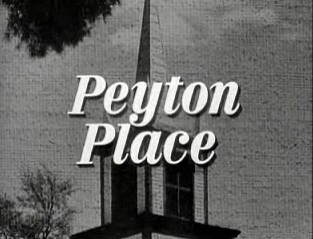
Peyton Place is an American prime-time soap opera that aired on ABC in half-hour episodes from September 15, 1964, to June 2, 1969.

Roderick Ross La Rocque was an American actor.
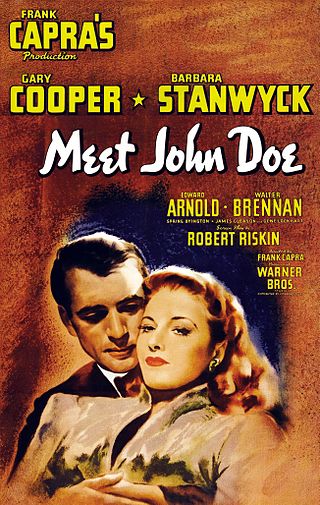
Meet John Doe is a 1941 American comedy-drama film directed and produced by Frank Capra, written by Robert Riskin, and starring Gary Cooper and Barbara Stanwyck. The film is about a "grassroots" political campaign created unwittingly by a newspaper columnist with the involvement of a hired homeless man and pursued by the paper's wealthy owner. It became a box-office hit and was nominated for an Academy Award for Best Story. It was ranked No. 49 in AFI's 100 Years ... 100 Cheers. In 1969, the film entered the public domain in the United States because the claimants did not renew its copyright registration in the 28th year after publication. It was the first of two features Capra made for Warner Brothers, after he left Columbia Pictures, the other being Arsenic and Old Lace (1944).
Witness to Murder is a 1954 American film noir crime drama directed by Roy Rowland and starring Barbara Stanwyck, George Sanders, and Gary Merrill. While the film received moderately positive reviews, it ended up as an also-ran to Alfred Hitchcock's somewhat similar Rear Window, which opened less than a month later. The latter picture was a box-office hit.

The Bitter Tea of General Yen is a 1933 American pre-Code drama war film directed by Frank Capra and starring Barbara Stanwyck, and featuring Nils Asther and Walter Connolly. Based on the 1930 novel of the same name by Grace Zaring Stone, the film is about an American missionary in Shanghai during the Chinese Civil War who gets caught in a battle while trying to save a group of orphans. Knocked unconscious, she is saved by a Chinese general warlord who brings her to his palace. When the general falls in love with the naive young woman, she fights her attraction to the powerful general and resists his flirtation, yet remains at his side when his fortune turns.
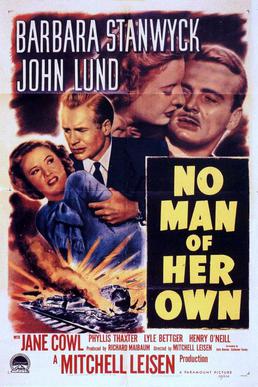
No Man of Her Own is a 1950 American film noir drama directed by Mitchell Leisen and featuring Barbara Stanwyck, John Lund, Phyllis Thaxter, Jane Cowl and Lyle Bettger. The production is the second film Stanwyck made with director Mitchell Leisen. Its screenplay was adapted from Cornell Woolrich's 1948 novel I Married a Dead Man. Woolrich is cited in the film's opening credits by one of his commonly used pseudonyms, "William Irish".
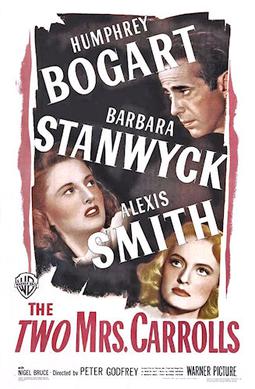
The Two Mrs. Carrolls is a 1947 American mystery film noir directed by Peter Godfrey and starring Humphrey Bogart, Barbara Stanwyck, and Alexis Smith. It was produced by Mark Hellinger from a screenplay by Thomas Job, based on the 1935 play by Martin Vale.

Alfred Hitchcock Presents, sometimes called The New Alfred Hitchcock Presents, is an American anthology series that aired on NBC from 1985 to 1986 and on the USA Network from 1987 to 1989. The series is an updated version of the 1955 eponymous series.

Barbara Stanwyck was a prolific American actress and dancer who appeared in a total of 95 theatrically released full-length motion pictures. Orphaned before she was old enough to attend school, she became fascinated by the burgeoning film industry, and actress Pearl White in particular, whom she would mimic on the playgrounds. "Pearl White was my goddess, and her courage, her grace, and her triumphs lifted me out of this world."

Stella Dallas is a 1937 American drama film based on the 1923 Olive Higgins Prouty novel of the same name. It was directed by King Vidor and stars Barbara Stanwyck, John Boles and Anne Shirley. The film was nominated for Academy Awards for Best Actress in a Leading Role and Best Actress in a Supporting Role.

Forbidden is a 1932 American pre-Code melodrama film directed by Frank Capra and starring Barbara Stanwyck, Adolphe Menjou, and Ralph Bellamy. An original story inspired by the 1931 novel Back Street by Fannie Hurst, with a screenplay by Jo Swerling, the film is about a young librarian who falls in love with a married man while on a sea cruise.

The Sign on the Door is a 1921 American silent drama film starring Norma Talmadge and Lew Cody. The film was directed and written by Herbert Brenon, and based upon the 1919 play of the same name by Channing Pollock. A copy of this film is in the Library of Congress film archive.
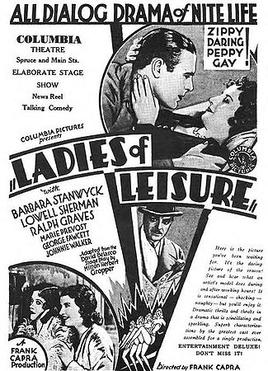
Ladies of Leisure is a 1930 American pre-Code romantic drama film directed by Frank Capra and starring Barbara Stanwyck and Ralph Graves. The screenplay by Jo Swerling is based on the 1924 play Ladies of the Evening by Milton Herbert Gropper, which ran for 159 performances on Broadway.
Red Salute is a 1935 American comedy film directed by Sidney Lanfield and starring Barbara Stanwyck and Robert Young. Based on a story by Humphrey Pearson, the film is about the daughter of a US Army general who becomes involved with a suspected communist agitator.
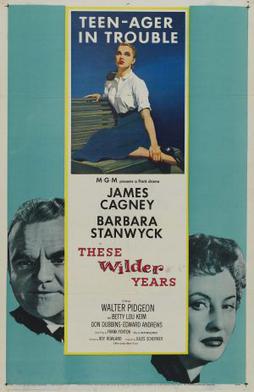
These Wilder Years is a 1956 American drama film directed by Roy Rowland and starring James Cagney, Barbara Stanwyck and Walter Pidgeon. It is the story of a businessman who tries to find the illegitimate son he gave up to an orphanage many years ago. The film marked the first and only onscreen pairing of Hollywood stars Cagney and Stanwyck.
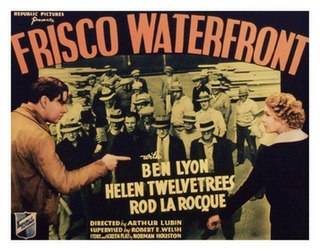
Frisco Waterfront is a 1935 American drama film directed by Arthur Lubin and Joseph Santley and starring Ben Lyon, Helen Twelvetrees and Rod La Rocque.

His Brother's Wife is a 1936 American romantic drama film directed by W. S. Van Dyke and starring Barbara Stanwyck and Robert Taylor. Written by Leon Gordon and John Meehan, based on a story by George Auerbach, the film is about a scientist preparing to leave for the jungles of South America to work on a cure for spotted fever. Wanting to have some fun before his trip, he goes to a gambling club where he meets and falls in love with a beautiful model while falling deep into debt. When he turns to his brother for help, his brother agrees to cover the debt, but only if he leaves without her. While the scientist is away, his brother and the model get married.

The Drag-Net is a 1936 American crime film directed by Vin Moore and starring Rod La Rocque, Marian Nixon and Betty Compson. It was made as a second feature at the Talisman Studios in Hollywood.
The Challenge is a 1922 American silent drama film directed by Tom Terriss and starring Rod La Rocque, Dolores Cassinelli and Warner Richmond.

















